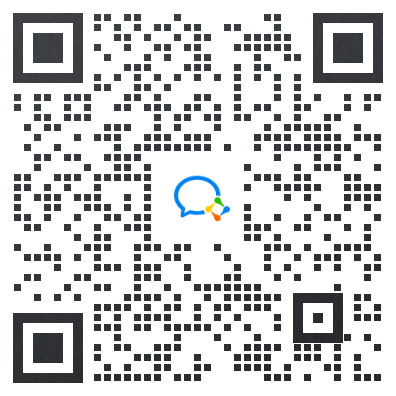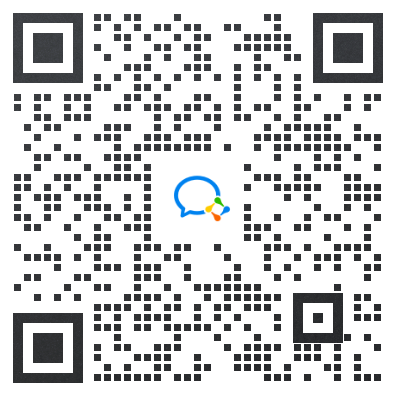
雅思免费课程NEW
剑桥题库机考HOT
雅思水平测试NEW
雅思选课中心
雅思听力
雅思口语
雅思阅读
雅思写作
雅思问答
雅思考试机经回忆
雅思动态NEW
雅思备考指导
雅思模拟题
雅思核心词汇NEW

雅思备考规划
扫码添加助教免费咨询雅思备考规划

扫码关注回复雅思获取最新雅思口语题库和备考资料
新东方在线雅思网第一时给大家带来了雅思阅读练习题:Life code。希望以下内容能够为同学们的雅思备考提供帮助。新东方在线雅思网将第一时间为大家发布最新、最全、最专业的雅思报名官网消息和雅思考试真题及解析,供大家参考。
A
On an airport shuttle bus to the Kavli Institute for Theoretical Physics in Santa Barbara, Calif, Chris Wiggins took a colleague's advice and opened a Microsoft Excel spreadsheet. It had nothing to do with the talk on biopolymer physics he was invited to give. Rather the columns and rows of numbers that stared back at him referred to the genetic activity of budding yeast. Specifically, the numbers represented the amount of messenger RNA (mRNA) expressed by all 6,200 genes of the yeast over the course of its reproductive cycle. “It was the first time I ever saw anything like this," Wiggins recalls of that spring day in 2002. "How to make sense of all these data?"
B
Instead of shirking from this question, the 36-year-old applied mathematician and physicist at Columbia University embraced it-and now six years later he thinks he has an answer. By foraying into fields outside his own, Wiggins has drudged up tools from a branch of artificial intelligence called machine learning to model the collective protein-making activity of genes from real-world biological data. Engineers originally designed these tools in the late 1950s to predict output from input. Wiggins and his colleagues have now brought machine learning to the natural sciences and tweaked it so that it can also tell a story—one not only about input and output but also about what happens inside a model of gene regulation, the black box in between.
C
The impetus for this work began in the late 1990s, when high-throughput techniques generated more mRNA expression profiles and DNA sequences than ever before, "opening up a completely different way of thinking about biological phenomena," Wiggins says. Key among these techniques were DNA microarrays, chips that provide a panoramic view of the activity of genes and their expression levels in any cell type, simultaneously and under myriad conditions. As noisy and incomplete as the data were, biologists could now query which genes turn on or off in different cells and determine the collection of proteins that give rise to a cell's characteristic features- healthy or diseased.
D
Yet predicting such gene activity requires uncovering the fundamental rules that govern it. “Over time, these rules have been locked in by cells,” says theoretical physicist Harmen Bussemaker, now an associate professor of biology at Columbia. "Evolution has kept the good stuff." To find these rules, scientists needed statistics to infer the interaction between genes and the proteins that regulate them and to then mathematically describe this network's underlying structure-the dynamic pattern of gene and protein activity over time. But physicists who did not work with particles (or planets, for that matter) viewed statistics as nothing short of an anathema. "If your experiment requires statistics," British physicist Ernest Rutherford once said, "you ought to have done a better experiment."
E
But in working with microarrays, "the experiment has been done without you," Wiggins explains. "And biology doesn't hand you a model to make sense of the data." Even more challenging, the building blocks that make up DNA, RNA and proteins are assembled in myriad ways; moreover, subtly different rules of interaction govern their activity, making it difficult, if not impossible, to reduce their patterns of interaction to fundamental laws. Some genes and proteins are not even known. "You are trying to find something compelling about the natural world in a context where you don't know very much," says William Bialek, a biophysicist atPrinceton University. "You're forced to be agnostic." Wiggins believes that many machine-learning algorithms perform well under precisely these conditions. When working with so many unknown variables, "machine learning lets the data decide what's worth looking at," he says.
F
At the Kavli Institute, Wiggins began building a model of a gene regulatory network in yeast-the set of rules by which genes and regulators collectively orchestrate how vigorously DNA is transcribed into mRNA. As he worked with different algorithms, he started to attend discussions on gene regulation led by Christina Leslie, who ran the computational biology group at Columbia at the time. Leslie suggested using a specific machine-learning tool called a classifier. Say the algorithm must discriminate between pictures that have bicycles in them and pictures that do not. A classifier sifts through labeled examples and measures everything it can about them, gradually learning the decision rules that govern the grouping. From these rules, the algorithm generates a model that can determine whether or not new pictures have bikes in them. In gene regulatory networks, the learning task becomes the problem of predicting whether genes increase or decrease their protein-making activity.
G
The algorithm that Wiggins and Leslie began building in the fall of 2002 was trained on the DNA sequences and mRNA levels of regulators expressed during a range of conditions in yeast-when the yeast was cold, hot, starved, and so on. Specifically, this algorithm-MEDUSA (for motif element discrimination using sequence agglomeration)—scans every possible pairing between a set of DNA promoter sequences, called motifs, and regulators. Then, much like a child might match a list of words with their definitions by drawing a line between the two, MEDUSA finds the pairing that best improves the fit between the model and the data it tries to emulate. (Wiggins refers to these pairings as edges.) Each time MEDUSA finds a pairing, it updates the model by adding a new rule to guide its search for the next pairing. It then determines the strength of each pairing by how well the rule improves the existing model. The hierarchy of numbers enables Wiggins and his colleagues to determine which pairings are more important than others and how they can collectively influence the activity of each of the yeast's 6,200 genes. By adding one pairing at a time, MEDUSA can predict which genes ratchet up their RNA production or clamp that production down, as well as reveal the collective mechanisms that orchestrate an organism's transcriptional logic.
Questions 1-6
The reading passage has seven paragraphs, A-G
Choose the correct heading for paragraphs A-G from the list below.
Write the correct number, i-x, in boxes 1-6 on your answer sheet.
List of Headings
i. The search for the better-fit matching between the model and the gained figures to foresee the activities of the genes
ii. The definition of MEDUSA
iii. A flashback of a commencement for a far-reaching breakthrough
iv. A drawing of the gene map
v. An algorithm used to construct a specific model to discern the appearance of something new by the joint effort of Wiggins and another scientist
vi. An introduction of a background tracing back to the availability of mature techniques for detailed research on genes
vii. A way out to face the challenge confronting the scientist on the deciding of researchable data
viii. A failure to find out some specific genes controlling the production of certain proteins
ix. The use of a means from another domain for reference
x. A tough hurdle on the way to find the law governing the activities of the genes
Example: Paragraph A iii
1 Paragraph B
2 Paragraph C
3 Paragraph D
4 Paragraph E
5 Paragraph F
6 Paragraph G
Questions 7-9
Do the following statements agree with the information given in Reading Passage 1?
In boxes 7-9 on your answer sheet, write
TRUE if the statement is true
FALSE if the statement is false
NOT GIVEN if the information is not given in the passage
7. Wiggins is the first man to use DNA microarrays for the research on genes.
8. There is almost no possibility for the effort to decrease the patterns of interaction between DNA, RNA and proteins.
9. Wiggins holds a very positive attitude on the future of genetic research.
Questions 10-13
Summary
Complete the following summary of the paragraphs of Reading Passage, using No More than Three words from the Reading Passage for each answer. Write your answers in boxes 10-13 on your answer sheet.
Wiggins states that the astoundingly rapid development of techniques concerning the components of genes aroused the researchers to look at 10 from a totally new way. 11 is the heart and soul of these techniques and no matter what the 12 were, at the same time they can offer a whole picture of the genes' activities as well as 13 in all types of cells. With these techniques scientists could locate the exact gene which was on or off to manipulate the production of the proteins.
本文关键字: 雅思阅读

 资料下载
资料下载
雅思写作高频词汇PDF下载
发布时间:2023-08-26添加新东方在线雅思助教号
回复【200】获取
590组雅思阅读写作必背短语PDF版下载
发布时间:2023-08-09添加新东方在线雅思助教号
回复【590】获取
雅思学术词汇搭配表PDF版下载
发布时间:2023-08-04添加新东方在线雅思助教号
回复【ACL】获取
雅思口语part3结构策略PDF版下载
发布时间:2023-08-04添加新东方在线雅思助教号
回复【Part3】获取
雅思听力高频场景词PDF版下载
发布时间:2023-08-09添加新东方在线雅思助教号
回复【高频词】获取
雅思口语Part2答案示范15篇PDF下载
发布时间:2023-07-26添加新东方在线雅思助教号
回复【P2】获取
雅思小作文35组必备表达PDF下载
发布时间:2023-07-26添加新东方在线雅思助教号
回复【35】获取
雅思阅读高频短语PDF下载
发布时间:2023-07-20添加新东方在线雅思助教号
回复【短语】获取
200组雅思写作高频词汇PDF下载
发布时间:2023-07-20添加新东方在线雅思助教号
回复【200】获取
雅思写作话题词汇PDF下载
发布时间:2023-07-16添加新东方在线雅思助教号
回复【话题】获取
50组雅思口语同义替换词PDF下载
发布时间:2023-07-10添加新东方在线雅思助教号
回复【替换】获取
雅思写作大作文精选题目101PDF下载
发布时间:2023-07-09添加新东方在线雅思助教号
回复【101】获取
雅思口语核心300词PDF下载
发布时间:2023-06-23添加新东方在线雅思助教号
回复【300】获取
雅思阅读分类词汇PDF下载
发布时间:2023-06-17添加新东方在线雅思助教号
回复【分类词】获取
雅思口语必备习语PDF下载
发布时间:2023-06-17添加新东方在线雅思助教号
回复【习语】获取
雅思小作文常用词汇66词PDF下载
发布时间:2023-06-16添加新东方在线雅思助教号
回复【66】获取
雅思口语常见功能结构109句PDF下载
发布时间:2023-06-08添加新东方在线雅思助教号
回复【109】获取
10年雅思写作题库PDF下载
发布时间:2023-06-08添加新东方在线雅思助教号
回复【写作话题】获取
雅思图表作文精选套句50句PDF下载
发布时间:2023-05-28添加新东方在线雅思助教号
回复【50】获取
雅思写作99组高频词汇PDF资料
发布时间:2023-05-28添加新东方在线雅思助教号
回复【99】获取
2023年5月雅思口语新题题库PDF版本
发布时间:2023-05-14添加新东方在线雅思助教号
回复【新题】获取
2023年5-8月雅思口语新题题库与解析PDF版本
发布时间:2023-05-06关注新东方在线考雅课程中心服务号
回复【新题】获取
雅思听力考点词汇PDF资料
发布时间:2023-04-27添加新东方在线雅思助教号
回复【考点词】获取
雅思听力机经词汇PDF资料
发布时间:2023-04-24添加新东方在线雅思助教号
回复【TL】获取
雅思口语Part1常见话题语料库PDF资料
发布时间:2023-04-20添加新东方在线雅思助教号
回复【Part1】获取
剑桥雅思阅读长难句50句PDF资料
发布时间:2023-04-19添加新东方在线雅思助教号
回复【长难句】获取
雅思阅读核心学术词汇表PDF资料
发布时间:2023-04-07关注新东方在线考雅课程中心服务号
回复【核心】获取
100个雅思写作观点词和替换词表达PDF资料
发布时间:2023-03-24关注新东方在线考雅课程中心服务号
回复【100】获取
雅思阅读分类词汇PDF资料
发布时间:2023-03-22关注新东方在线考雅课程中心服务号
回复【分类词】获取
雅思阅读短语PDF资料
发布时间:2023-03-08关注新东方在线考雅课程中心服务号
回复【短语】获取

添加新东方在线雅思助教,
回复【口语】获取雅思口语资料大礼包

 推荐阅读
推荐阅读
很多考鸭在备考过程中会想去寻找一些原文资料,想要轻松有效地提升自己的雅思水平,这是非常不错的做法! 本文主要为大家介绍实用的英文书籍,希望对大家的雅思备考有所帮助。
很多考鸭在备考过程中会想去寻找一些原文资料,想要轻松有效地提升自己的雅思水平,这是非常不错的做法! 本文主要为大家介绍实用的英文书籍,希望对大家的雅思备考有所帮助。
很多考鸭在备考过程中会想去寻找一些原文资料,想要轻松有效地提升自己的雅思水平,这是非常不错的做法! 本文主要为大家介绍实用的英文书籍,希望对大家的雅思备考有所帮助。
很多考鸭在备考过程中会想去寻找一些原文资料,想要轻松有效地提升自己的雅思水平,这是非常不错的做法! 本文主要为大家介绍实用的英文书籍,希望对大家的雅思备考有所帮助。
很多考鸭在备考过程中会想去寻找一些原文资料,想要轻松有效地提升自己的雅思水平,这是非常不错的做法! 本文主要为大家介绍实用的英文书籍,希望对大家的雅思备考有所帮助。





 资料下载
资料下载
添加新东方在线雅思助教号
回复【200】获取
添加新东方在线雅思助教号
回复【590】获取
添加新东方在线雅思助教号
回复【ACL】获取
添加新东方在线雅思助教号
回复【Part3】获取
添加新东方在线雅思助教号
回复【高频词】获取
添加新东方在线雅思助教号
回复【P2】获取
添加新东方在线雅思助教号
回复【35】获取
添加新东方在线雅思助教号
回复【短语】获取
添加新东方在线雅思助教号
回复【200】获取
添加新东方在线雅思助教号
回复【话题】获取
添加新东方在线雅思助教号
回复【替换】获取
添加新东方在线雅思助教号
回复【101】获取
添加新东方在线雅思助教号
回复【300】获取
添加新东方在线雅思助教号
回复【分类词】获取
添加新东方在线雅思助教号
回复【习语】获取
添加新东方在线雅思助教号
回复【66】获取
添加新东方在线雅思助教号
回复【109】获取
添加新东方在线雅思助教号
回复【写作话题】获取
添加新东方在线雅思助教号
回复【50】获取
添加新东方在线雅思助教号
回复【99】获取
添加新东方在线雅思助教号
回复【新题】获取
关注新东方在线考雅课程中心服务号
回复【新题】获取
添加新东方在线雅思助教号
回复【考点词】获取
添加新东方在线雅思助教号
回复【TL】获取
添加新东方在线雅思助教号
回复【Part1】获取
添加新东方在线雅思助教号
回复【长难句】获取
关注新东方在线考雅课程中心服务号
回复【核心】获取
关注新东方在线考雅课程中心服务号
回复【100】获取
关注新东方在线考雅课程中心服务号
回复【分类词】获取
关注新东方在线考雅课程中心服务号
回复【短语】获取

 编辑推荐
编辑推荐
 雅思新题
雅思新题
 阅读排行榜
阅读排行榜
 相关内容
相关内容